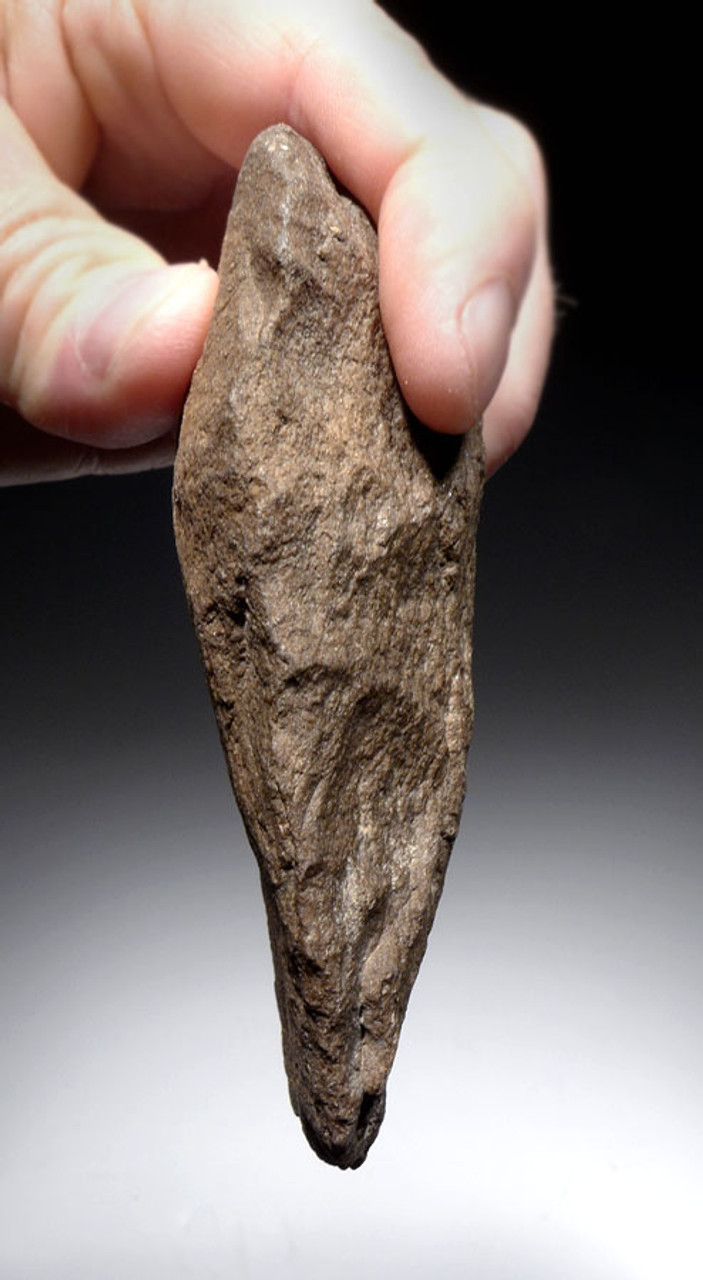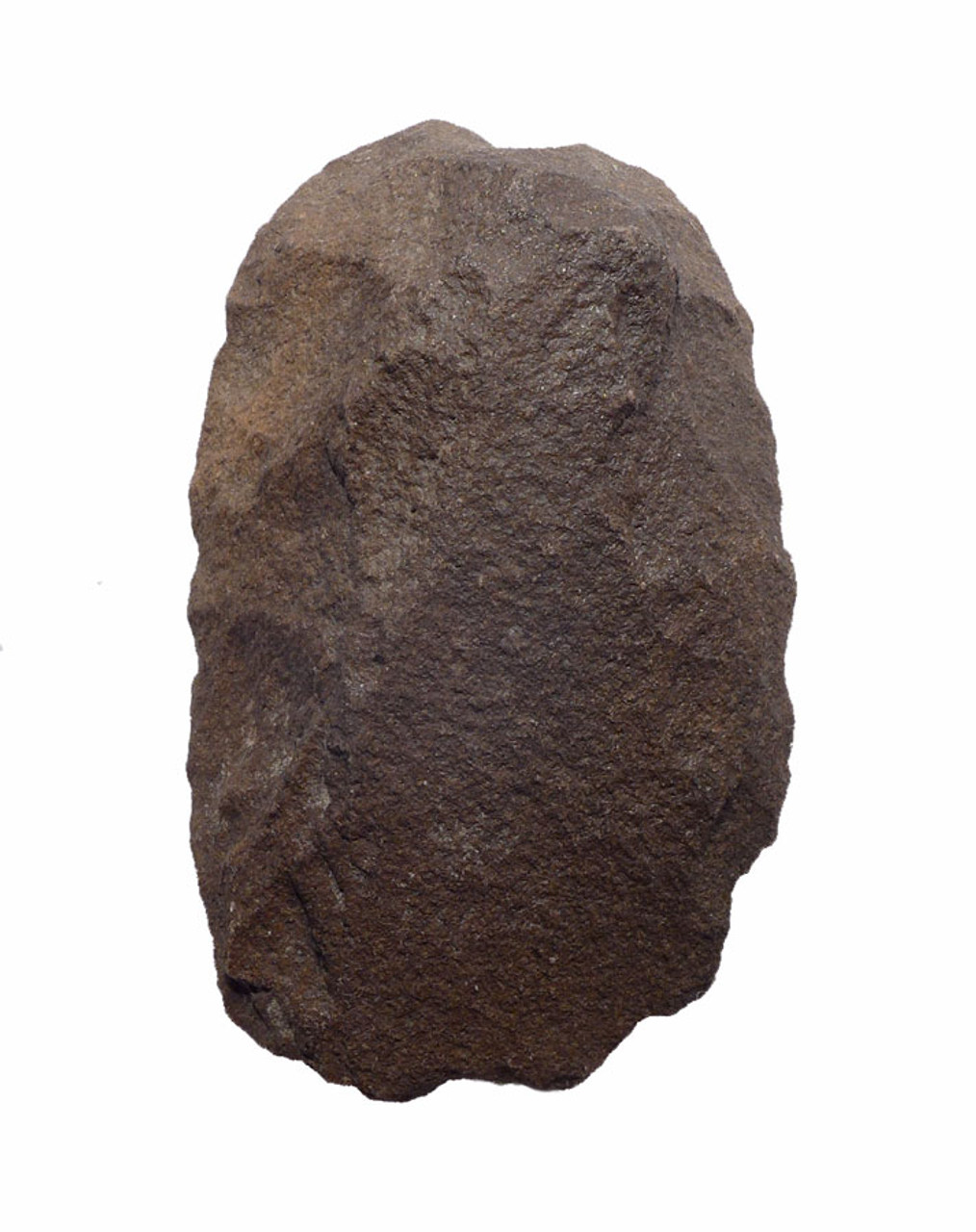Product Description
This genuine Saharan Acheulean handaxe was made and used by early humans of the species Homo ergaster (African Homo erectus). It was surface-collected from an exposed Acheulian site in the Northern Sahara Desert of North Africa. This Lower Paleolithic tool represents the first intelligent design type known to science, that was made by primitive humans. Prior to these Saharan Acheulean tools, only crude pebble tools existed in the human fossil record.
Made on a KOMBEWA FLAKE, this CLEAVER hand axe is an exceptional example of the Lower Paleolithic Kombewa Method whereby a large round flake with double convex sides is utilized. This is a much lesser found handaxe than any other type of the Acheulian Tradition in the northern Sahara deposits. THIS IS THE SECOND TIME WE HAVE OFFERED A KOMBEWA FLAKE HAND AXE. This cleaver features a broad and well-made profile and chopping edge. Most ingenious and as proof of the intellect of Homo ergaster (the Sahara version of Homo erectus), this handaxe has been specifically flaked on the proximal end to be held deep in the web of the left hand. Holding an axe in the left hand would allow a right handed person to grab and pull flesh, hide and fat from the butchered carcass while the left hand chops it away such as with this cleaver axe. Bi-color patina indicates extreme long-term exposure undisturbed, on one side - traits only found in authentic Acheulian artifacts. NO REPAIR AND NO RESTORATION.
During this time in prehistory when this Lower Paleolithic tool was made, the Sahara Desert (where this stone tool was found) was a savanna rich in wildlife. Prior to the prehistoric global warming that turned the vast region to desert, early humans lived alongside prehistoric giraffe, bison and elephant, which were vital to their survival. Hunting and butchering these animals would have required specialized tools such as those found in the Acheulian Period.
CLICK HERE TO LEARN MORE ABOUT ACHEULIAN TOOLS
 US DOLLAR
US DOLLAR
 EURO
EURO
 AUSTRALIAN DOLLAR
AUSTRALIAN DOLLAR
 CANADIAN DOLLAR
CANADIAN DOLLAR
 POUND STERLING
POUND STERLING




















